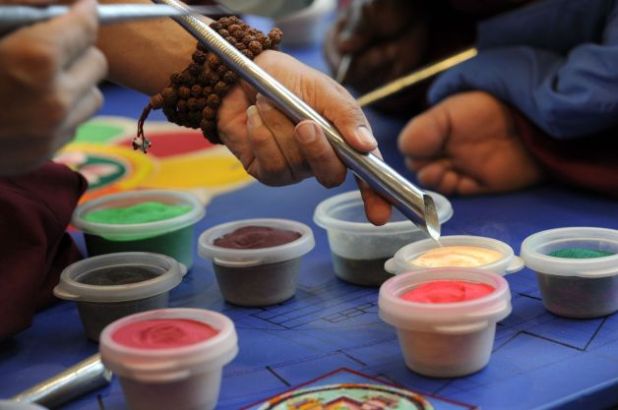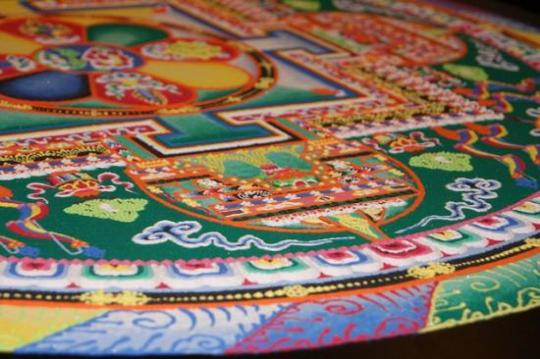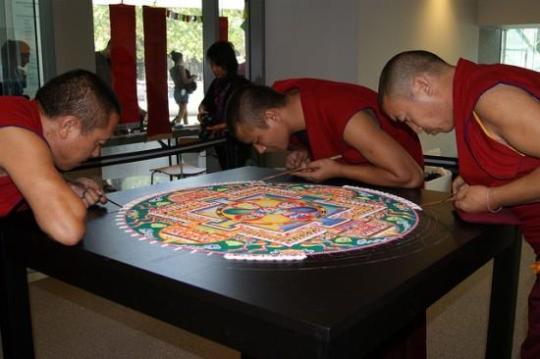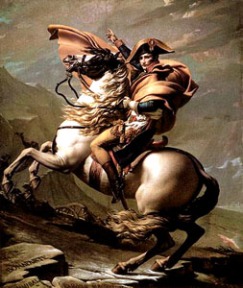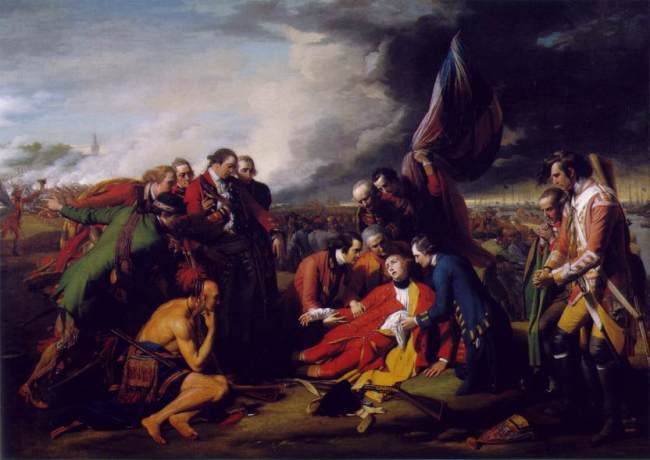(Western Connecticut State university Monday, Oct. 15, 2012)
The Mandala (Tibetan sand painting) is an art form that is practiced by Tibetan Buddhists. The word mandala is a word of Sanskrit origin that means “world in harmony”; mandalas themselves are 3-D drawings that are done with sand. For Tibetan Buddhists, a mandala is an imaginary place that is thought of during meditation and each object has significance. Painting with colored sand is considered exquisite, often made from ground rocks or ground herbs. For example, rubies would be used for red sand. All mandals have an outer, inner, and secret meaning to them. On the outer level, they represent the world in its divine fore. In the inner level, they represent a map by which the human mind changes into an enlightened mind. On the secret level, the mandalas predict the balance of energies of the bodies and the clear light dimension of the mind. It was hard to find pieces through a source that were completed in foreign countries, likely because many places that practice this (monasteries) do not use possessions like cameras.
Mandalas begin with an opening ceremony. Monks bless the site and call the forces of good through chanting, flutes, drums, and cymbals, The construction begins with the drawing of the design on the base. In the following days, millions of grains of sand are laid into place with a funnel called a “chakpur.” Mandalas are constructed whenever there is a need for healing of the environment. Once finished, the sands are swept up and poured into a river or stream. For more information on the construction process, visit: http://www.gomang.org/mandala.html
These pictures were taken at the Martin Luther King Jr. Library in October 9-13, 2010. This is a group of Tibetan Monks from the Drepung Loseling Phukhang Monastery who were trying to spread the message of world peace. This is an example of a tradition Mandala.
This was done in October 2007 by the Tharlam Monastery of Tibetan Buddhism in Nepal. Masters of ceremony assist His Holinesss Dagchen Rinpoche- holding the bell and praying while the circle is closed.
There are many videos of this, but here is one that is a time lapse showing how it is done from the beginning:
Works Cited:
“Mandala.” The Sacred Art of Sand Mandalas. The Tibetan Monks of Drepung Gomang Monastery, n.d. Web. 28 Apr. 2014. <http://www.gomang.org/mandala.html>.
Miller, Robert. “Sand Painting Sacred to Tibetan Monks.” Connecticut Post. CtPost, 15 Oct. 2012. Web. 28 Apr. 2014. <http://www.ctpost.com/local/article/Sand-painting-sacred-to-Tibetan-monks-3951324.php#photo-3596889>.
Sumitra. “Tibetan Sand Mandals – The Sacred Art of Painting with Colored Sand | Oddity Central – Collecting Oddities.” Oddity Central Collecting Oddities. N.p., 15 Jan. 2013. Web. 28 Apr. 2014. <http://www.odditycentral.com/pics/tibetan-sand-mandals-the-sacred-art-of-painting-with-colored-sand.html>.
